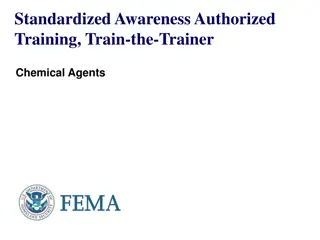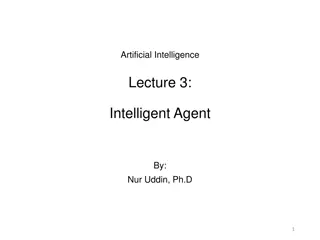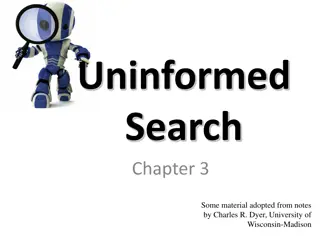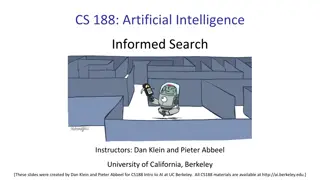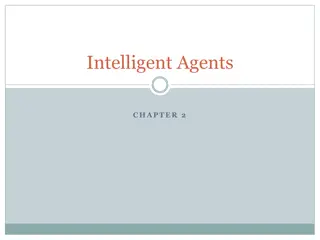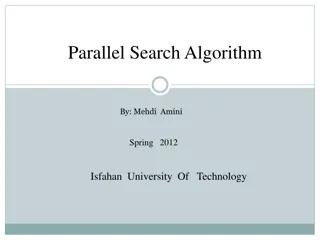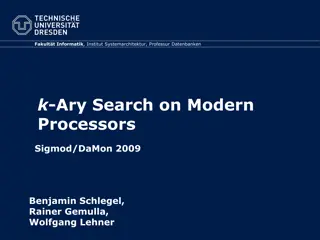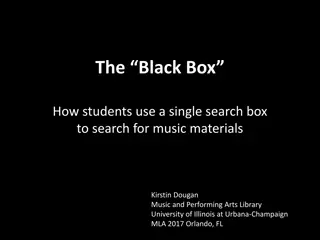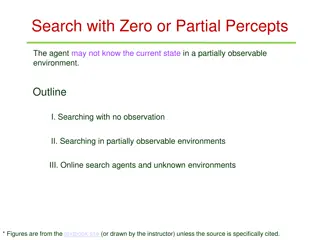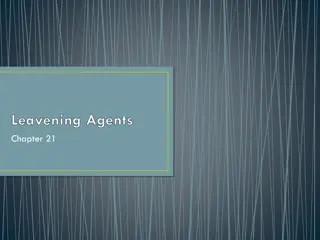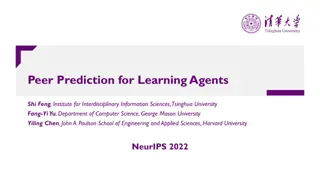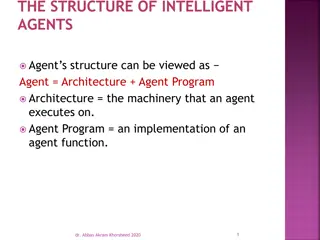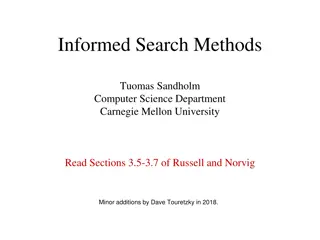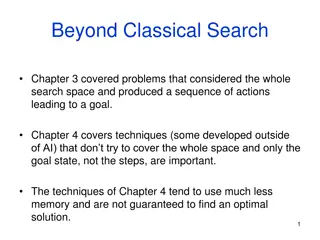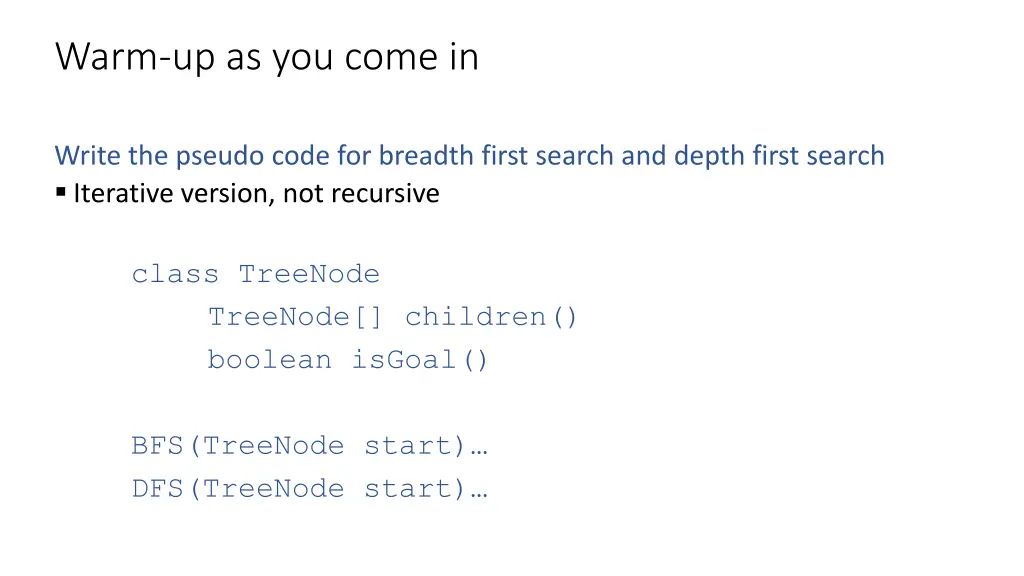
Agent Design Techniques and Missed Lecture Activities
Explore the concepts of designing agents in artificial intelligence and engage in missed lecture activities regarding elevator control and hopscotch game states. Dive into the fundamentals of AI techniques, problem-solving, and environment characteristics influencing agent actions.
Download Presentation

Please find below an Image/Link to download the presentation.
The content on the website is provided AS IS for your information and personal use only. It may not be sold, licensed, or shared on other websites without obtaining consent from the author. If you encounter any issues during the download, it is possible that the publisher has removed the file from their server.
You are allowed to download the files provided on this website for personal or commercial use, subject to the condition that they are used lawfully. All files are the property of their respective owners.
The content on the website is provided AS IS for your information and personal use only. It may not be sold, licensed, or shared on other websites without obtaining consent from the author.
E N D
Presentation Transcript
Warm-up as you come in Write the pseudo code for breadth first search and depth first search Iterative version, not recursive class TreeNode TreeNode[] children() boolean isGoal() BFS(TreeNode start) DFS(TreeNode start)
Announcements If you are not on Piazza, Gradescope, and Canvas E-mail me: srosenth@andrew.cmu.edu Recitation starting this Friday Start P0 before recitation to make sure Python 3.10 is working for you Choose any section for first two weeks We ll have you commit to a recitation section after the third week Priority given to students in the section Stay tuned to Piazza for form to informally switch sections if space
Announcements Assignments: P0: Python & Autograder Tutorial Due Friday 1/20, 10 pm No pairs, submit individually No OH on Fridays! HW1 (online) Out Due Tuesday 1/24, 10 pm P1 out Tuesday! Remaining programming assignments may be done in pairs Note about course grading
Designing Agents An agent is an entity that perceives and acts. Characteristics of the percepts and state, environment, and action space dictate techniques for selecting actions This course is about: General AI techniques for a variety of problem types Learning to recognize when and how a new problem can be solved with an existing technique Environment Sensors Percepts Agent ? Actuators Actions
Missed Lecture 1 Activity 1) An agent controls the elevator in a 10-story building. On each floor, the doors can be open or closed. The elevator can also be ``moving'' between floors. How many states could the agent be in? Single or Multi-agent? Discrete or Continuous states? Static or Dynamic environment? Deterministic or Stochastic actions? Fully observable or partially states?
Missed Lecture 1 Activity Hopscotch is a game where 10 squares are drawn and labeled 1-10. There is also a start state to stand on a throw a stone. A player throws the stone and then hops the squares in order, avoiding the one with the stone in it. Other players watch. Consider the states where two players scotcher and observer - and the stone are situated in the middle of the game. Ignore the state where the player is holding the stone, but do consider when they have not started jumping yet. Assume the game is played on a flat surface. How many states are there in hopscotch? Continuous or discrete states? Start State
AI: Representation and Problem Solving Agents and Search Instructors: Stephanie Rosenthal Slide credits: CMU AI, http://ai.berkeley.edu
Today Reflex vs Planning Agents Search Problems Uninformed Search Methods Depth-First Search Breadth-First Search Uniform-Cost Search
Designing Agents An agent is an entity that perceives and acts. Characteristics of the percepts and state, environment, and action space dictate techniques for selecting actions Environment Sensors Percepts Agent ? Actuators Actions
Reflex Agents Reflex agents: Choose actions based on current/historic state Do not consider the future consequences of their actions May have memory or a model of the world s current state Consider how the world IS Can a reflex agent be rational?
Agents that Plan Ahead Planning agents: Decisions based on predicted consequences of actions Must have a transition model: how the world evolves in response to actions Must formulate a goal Consider how the world WOULD BE Spectrum of deliberativeness: Generate complete, optimal plan offline, then execute Generate a simple, greedy plan, start executing, replan when something goes wrong
Search Problems A search problem consists of: A state space For each state, a set Actions(s) of allowable actions {N, E} 1 N A transition model Result(s,a) E 1 A step cost function c(s,a,s ) A start state and a goal test A solution is a sequence of actions (a plan) which transforms the start state to a goal state
Example: Travelling in Romania State space: Cities Actions: Go to adjacent city Transition model Result(A, Go(B)) = B Step cost Distance along road link Start state: Arad Goal test: Is state == Bucharest? Solution? Oradea 71 Neamt 87 Zerind 151 75 Iasi Arad 140 92 Sibiu Fagaras 99 118 Vaslui 80 Rimnicu Vilcea Timisoara 142 211 111 Pitesti Lugoj 97 70 98 Hirsova 85 146 Mehadia 101 Urziceni 86 75 138 Bucharest 120 Drobeta 90 Eforie Craiova Giurgiu
State Space Graphs State space graph: A mathematical representation of a search problem Nodes are (abstracted) world configurations Arcs represent transitions resulting from actions The goal test is a set of goal nodes (maybe only one) In a state space graph, each state occurs only once! We can rarely build this full graph in memory (it s too big), but it s a useful idea
More Examples R L R L S S R R L R L R L L S S S S R L R L S S
State Space Graphs vs. Search Trees How big is its search tree (from S)? Consider this 4-state graph: S a b a G S G b G a b G a b G Important: Lots of repeated structure in the search tree!
functionTREE_SEARCH(problem) returnsa solution, or failure initialize the frontier as a specific work list (stack, queue, priority queue) add initial state of problem to frontier loop do ifthe frontier is empty then returnfailure choose a node and remove it from the frontier ifthe node contains a goal state then returnthe corresponding solution for each resulting child from node add child to the frontier
functionGRAPH_SEARCH(problem) returnsa solution, or failure initialize the explored set to be empty initialize the frontier as a specific work list (stack, queue, priority queue) add initial state of problem to frontier loop do ifthe frontier is empty then returnfailure choose a node and remove it from the frontier ifthe node contains a goal state then returnthe corresponding solution add the node state to the explored set for each resulting child from node if the child state is not already in the frontier or explored set then add child to the frontier
Poll 1 What is the relationship between these sets of states after each loop iteration in GRAPH_SEARCH? (Loop invariants!!!) A B C Explored Never Seen Explored Never Seen Explored Never Seen Frontier Frontier Frontier
Poll 1 functionGRAPH-SEARCH(problem) returnsa solution, or failure initialize the explored set to be empty initialize the frontier as a specific work list (stack, queue, priority queue) add initial state of problem to frontier loop do ifthe frontier is empty then returnfailure choose a node and remove it from the frontier ifthe node contains a goal state then returnthe corresponding solution add the node state to the explored set for each resulting child from node if the child state is not already in the frontier or explored set then add child to the frontier
A Note on Implementation Nodes have state, parent, action, path-cost PARENT A child of node by action a has state = result(node.state,a) parent = node action = a path-cost = node.path_cost + step_cost(node.state, a, self.state) Node ACTION = Right PATH-COST = 6 5 5 4 4 6 6 1 1 8 8 STATE 7 7 3 3 2 2 Extract solution by tracing back parent pointers, collecting actions
Graph Search This graph search algorithm overlays a tree on a graph The frontier states separate the explored states from never seen states Images: AIMA, Figure 3.8, 3.9
G Walk-through BFS Graph Search a c b e d f S h p r q
G Walk-through DFS Graph Search a c b e d f S h p r q
Depth-First (Tree) Search G Strategy: expand a deepest node first a a c c b b e e Implementation: Frontier is a LIFO stack d d f f S h h p p r r q q S e p d q e h r b c h r p q f a a q c G p q f a q c G a
BFS vs DFS When will BFS outperform DFS? When will DFS outperform BFS?
Search Algorithm Properties Complete: Guaranteed to find a solution if one exists? Optimal: Guaranteed to find the least cost path? Time complexity? Space complexity? 1 node b nodes b2 nodes b Cartoon of search tree: b is the branching factor m is the maximum depth solutions at various depths m tiers bm nodes Number of nodes in entire tree? 1 + b + b2+ . bm = O(bm)
Search Algorithm Properties Complete: Guaranteed to find a solution if one exists? Optimal: Guaranteed to find the least cost path? Time complexity? Space complexity? 1 node b nodes b2 nodes b Cartoon of search tree: b is the branching factor m is the maximum depth solutions at various depths m tiers bm nodes Number of nodes in entire tree? 1 + b + b2+ . bm = O(bm)
Think about it 1 node b nodes b2 nodes b Are these the properties for BFS or DFS? m tiers Takes O(bm) time Uses O(bm) space on frontier bm nodes Complete with graph search Not optimal unless all goals are in the same level (and the same step cost everywhere)
Depth-First Search (DFS) Properties What nodes does DFS expand? Some left prefix of the tree. Could process the whole tree! If m is finite, takes time O(bm) 1 node b nodes b2 nodes b How much space does the frontier take? Only has siblings on path to root, so O(bm) m tiers Is it complete? (always find a solution) m could be infinite, so only if we prevent cycles (graph search) bm nodes Is it optimal? (solution is best ) No, it finds the leftmost solution, regardless of depth or cost
Breadth-First Search (BFS) Properties What nodes does BFS expand? Processes all nodes above shallowest solution Let depth of shallowest solution be s Search takes time O(bs) 1 node b nodes b2 nodes b s tiers How much space does the frontier take? Has roughly the last tier, so O(bs) bs nodes Is it complete? s must be finite if a solution exists, so yes! bm nodes Is it optimal? Only if costs are all the same (more on costs later)
Iterative Deepening Idea: get DFS s space advantage with BFS s time / shallow-solution advantages Run a DFS with depth limit 1. If no solution Run a DFS with depth limit 2. If no solution Run a DFS with depth limit 3. .. b Isn t that wastefully redundant? Generally most work happens in the lowest level searched, so not so bad!
Iterative Deepening G Strategy: expand a deepest node first to a max depth, iteratively increase the depth a c b e d f S h Implementation: Frontier is a LIFO stack p r q S e p d q e h r b c h r p q f a a q c G p q f a q c G a
functionGRAPH_SEARCH(problem) returnsa solution, or failure initialize the explored set to be empty initialize the frontier as a specific work list (stack, queue, priority queue) add initial state of problem to frontier loop do ifthe frontier is empty then returnfailure choose a node and remove it from the frontier ifthe node contains a goal state then returnthe corresponding solution add the node state to the explored set for each resulting child from node if the child state is not already in the frontier or explored set then add child to the frontier
functionUNIFORM-COST-SEARCH(problem) returnsa solution, or failure initialize the explored set to be empty initialize the frontier as a priority queue using node path_cost as the priority add initial state of problem to frontier with path_cost = 0 loop do ifthe frontier is empty then returnfailure choose a node and remove it from the frontier ifthe node contains a goal state then returnthe corresponding solution add the node state to the explored set for each resulting child from node if the child state is not already in the frontier or explored set then add child to the frontier else if the child is already in the frontier with higher path_cost then replace that frontier node with child
Walk-through UCS 2 C G 4 A 1 3 B S D 4 1
Walk-through UCS GOAL a 2 2 c b 3 2 1 8 2 e 3 d f 9 8 2 START h 4 2 1 4 p r q 15
In Class Activity! Q1 practice running graph search. What gets added to the explored list in what order? Q2 - Amazon warehouses use robots to transport items to packers along the outside edge of the warehouse to reduce the amount of walking those packers must do. These robots need to plan their paths to their goals without hitting each other. Think about how we would apply graph search to this multi-robot problem
Summary - Reflex vs Planning Agents - Modeling state based on the problem you re trying to solve - Tree vs Graph Search - BFS, DFS, UCS - Branching factor, Search space (size of frontier) - Completeness of search is whether it will always find A solution - Optimality of search is whether it always finds the BEST solution Extra slides below on search properties and iterative deepening
Breadth-First (Tree) Search G a Strategy: expand a shallowest node first c b e Implementation: Frontier is a FIFO queue d f S h p r q S e p d Search q e h r b c Tiers h r p q f a a q c G p q f a q c G a
Uniform Cost (Tree) Search 2 G a Strategy: expand a cheapest node first: c b 8 1 2 2 e 3 d f 2 9 Frontier is a priority queue (priority: cumulative cost) 8 S h 1 1 p r q 15 0 S 1 9 e p 3 d 16 q 11 5 17 e h r 4 b c 11 Cost contours 7 6 13 h r p q f a a q c 8 G p q f a q c 11 10 G a
Uniform Cost Search (UCS) Properties What nodes does UCS expand? Processes all nodes with cost less than cheapest solution! If that solution costs C* and arcs cost at least ,then the effective depth is roughly C*/ Takes time O(bC*/ ) (exponential in effective depth) b c 1 How much space does the frontier take? Has roughly the last tier, so O(bC*/ ) c 2 C*/ tiers c 3 Is it complete? Assuming best solution has a finite cost and minimum arc cost is positive, yes! Is it optimal? Yes! (Proof next lecture via A*)
Uniform Cost Issues Remember: UCS explores increasing cost contours c 1 c 2 c 3 The good: UCS is complete and optimal! The bad: Explores options in every direction No information about goal location Start Goal We ll fix that soon!

